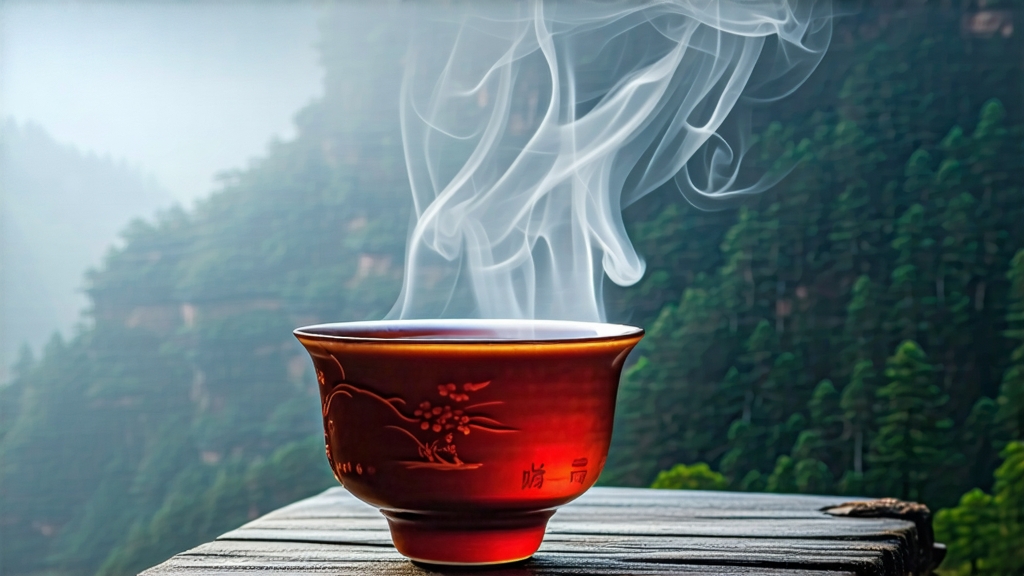
When European tea clippers first rounded the Cape of Good Hope in the early seventeenth century, the cargo that most excited London merchants was not silks or porcelains but small, glossy leaves from the rocky Wuyi Mountains of northern Fujian. Those leaves, already dark as midnight from deliberate smoking over fresh pinewood, would be christened “Lapsang Souchong” by Dutch traders—lap sang meaning “pine variety” in the local Min dialect, and souchong referring to the fourth or fifth leaf picked from the stem. In the smoky coffee-houses of Restoration England the infusion was hailed as “bohea,” a corruption of the Wuyi range itself, and within decades it became the prototype for every black tea the West would know. Today, while newer cultivars flood the market, the original Lapsang Souchong remains the charismatic forebear: the first fully oxidised leaf in recorded history, still coaxed into its haunting perfume by the same mountain breezes and resinous fires that beguiled Pepys and Defoe.
Geography and terroir
The core micro-region is a 30-kilometre granite corridor along the Chong’an River, between Tongmu Pass and the village of Xingcun. Here the Min River cuts through the Wuyi UNESCO heritage site, creating a humid, fog-locked amphitheatre where daytime temperatures hover around 18 °C and nighttime mists drop to 12 °C. Such diurnal shock slows photosynthesis, thickening cell walls and concentrating the sweet amino acids that later balance the smoke. Soils are thin, acidic, mineral-rich laterite strewn with weathered quartz; roots must dive into fissures for nutrients, yielding a leaf unusually high in geraniol and linalool—floral volatiles that marry with pine resin to produce the tea’s signature “longan and smoked apricot” nose.
Two families, not one
International buyers often meet two entirely different teas sold under the same name. The traditional “Smoke-dried Lapsang” (zhengshan xiaozhong) is protected by Chinese GI status and must be withered, oxidised, and dried within Tongmu itself, using local Masson pine. A newer “Unsmoked Lapsang” (wuxun xiaozhong) appeared in 2005 when a Tongmu craftsman, Liang Junde, removed the final pine-firing stage to satisfy delicate mainland palates; the resulting strip-style leaf, oxidised fully but finished in electric ovens, releases notes of caramelised fig, malt, and dried longan without any campfire overtone. Both styles share the same cultivar—xiaoye zhong, or “small-leaf original bush”—a slow-growing landrace that germinates only after the spring equinox, ensuring the lowest astringency of any Chinese black.
Craft: from cliff to cup
Picking begins on the first clear morning after Grain Rain, when two leaves and a bud have unfurled to the length of a sparrow’s tongue. The pluckers work barefoot on 70-degree slopes, laying leaves into shallow bamboo creels lined with banana leaf to prevent bruising. Back at the cottage, the green leaf is spread on hemp screens set over dying pinewood embers; the warm updraft (28–30 °C) dehydrates the surface yet keeps the stem supple, enabling the peculiar “soft wither” that preserves enzymes for later fragrance. After 80–90 minutes the leaf is hand-tossed in willow baskets every twenty minutes for six hours, a gentle bruising that initiates oxidation without breaking the cell walls. When the leaf turns chestnut-brown and emits a ripe peach aroma, it is given a 30-second blast of 200 °C heat in iron woks—a “kill-green” that halts oxidation at 90 %, locking in maltol and cis-jasmone. The final act is the pinewood smoke: fresh logs are split, lit, then smothered to create a cool, aromatic smoke that is ducted beneath bamboo trays for eight hours. The tea absorbs only the volatiles, not the tar, emerging glossy, coal-black, and scented like a distant winter hearth.
Grading the leaf
Within Tongmu, four ascending grades are recognised by size and aroma. Third-grade “Caihong” contains broken leaf and delivers a blunt, tarry cup. Second-grade “Zhihong” is whole yet picked later